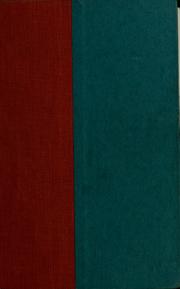Check nearby libraries
Buy this book

Once upon a time, seven wonders of the world stood tall and brilliant and, it must have seemed, would stand forever, impervious to time and gravity. Now only one remains—the pyramid at Khufu, in the Egyptian desert near Cairo. All of the others have fallen down.
Modern technologies, computerized designs, and new materials have minimized structural failures nearly to the vanishing point. Even so, we can learn from ancient as well as recent history. Why Buildings Fall Down chronicles the how and why of the most interesting structural failures in history and especially in the twentieth century.
Not even all of the pyramids are still with us. The Pyramid of Meidum has shed 2,500,000 tons of limestone and continues to disintegrate. Beginning there our authors, both world-renowned structural engineers, take us on a guided tour of enlightening structural failures—buildings of all kinds, from ancient domes like Istanbul's Hagia Sophia to the state of the art Hartford Civic Arena, from the man-caused destruction of the Parthenon to the earthquake damage of 1989 in Armenia and San Francisco, the Connecticut Thruway bridge collapse at Mianus, and one of the most fatal structural disasters in American history: the fall of the Hyatt Regency ballroom walkways in Kansas City.
Buildings have fallen throughout history whether made of wood, steel, reinforced concrete, or stone. But these failures do respect the laws of physics. All are the result of static load or dynamic forces, earthquakes, temperature changes, uneven settlements of the soil, or other unforeseen forces. A few are even due to natural phenomena that engineers and scientists are still unable to explain or predict.
The stories that make up Why Buildings Fall Down are, finally, very human ones, tales of the interaction of people and nature, of architects, engineers, builders, materials, and natural forces, all coming together in sometimes dramatic and always instructive ways in the places where we live and work and have our lives.—Jacket
First published as a Norton paperback
Check nearby libraries
Buy this book

Previews available in: English
Showing 4 featured editions. View all 4 editions?
| Edition | Availability |
|---|---|
|
1
Why buildings fall down: how structures fail
2002, W.W. Norton
in English
- Updated and expanded.
039331152X 9780393311525
|
cccc
Libraries near you:
WorldCat
|
|
2
Why buildings fall down: how structures fail
2002, W.W. Norton
in English
- Updated and expanded.
039331152X 9780393311525
|
zzzz
Libraries near you:
WorldCat
|
|
3
Why buildings fall down: How Structures fail
1994, W. W. Norton & Company
Paperback
in English
039331152X 9780393311525
|
zzzz
Libraries near you:
WorldCat
|
|
4
Why Buildings Fall Down: How Structures Fail
1992, W.W. Norton
Hardcover
in English
0393033562 9780393033564
|
aaaa
Libraries near you:
WorldCat
|
Book Details
Edition Notes
Includes index.
Classifications
Contributors
The Physical Object
ID Numbers
Source records
Scriblio MARC recordLibrary of Congress MARC record
marc_cca MARC record
Ithaca College Library MARC record
Internet Archive item record
marc_openlibraries_phillipsacademy MARC record
Internet Archive item record
Better World Books record
Library of Congress MARC record
Promise Item
marc_columbia MARC record
Links outside Open Library
Community Reviews (0)
Feedback?| December 19, 2023 | Edited by ImportBot | import existing book |
| August 6, 2021 | Edited by New York Times Bestsellers Bot | Add NYT review links |
| May 6, 2021 | Edited by Altercari | adding description |
| May 6, 2021 | Edited by Altercari | adding 2nd author |
| December 10, 2009 | Created by WorkBot | add works page |















